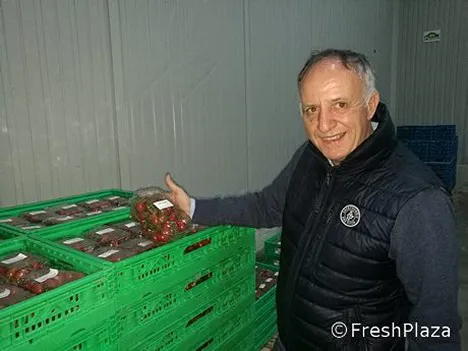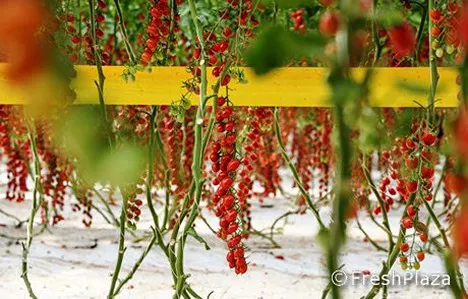We are approaching the last week of May, a quite crucial month for the marketing of tomatoes which, at this time of the year, is subject to downturns. To take stock of the situation, we interviewed Massimo Pavan, an expert in European agribusiness.

"The production trend, based on the feedback I am receiving - said Pavan - suggests that it is getting more and more complicated to produce tomatoes. The costs are increasing because of new diseases and of Tuta absoluta which, at high temperatures, is devastating the production, leading to rather low yields. While until a few years ago the cost of cherry tomatoes production was around 1 - 1.20 Euro per kg, now it is around 1.40/1.50. It is clear that no other market today can cover these average prices. Therefore, I believe that tomatoes are not able to compete in the long run".
An alarming scenario
"It simply means that the average producer still can't make ends meet - replied the manager - They think they're earning money, because they're selling tomatoes at 1.20, but they are not aware that they're losing 20/30 Euro cents/kg. The production prices of the tomato, in the last 10 days, have collapsed and the price of the cherry varies from 30 to 70 euro cents for the best quality. Of course, foreign countries have closed their doors to us, as their production has already started in March and because other Mediterranean geographical areas, in addition to Sicily, have also entered the domestic market."

Driving segments are difficult to identify
"It is not easy to forecast trends in consumption - explained the expert - also because the only product that is wanted, and sometimes overpaid, is the missing one. I sometimes think of the date tomato that, whenever it is not available, reaches even 3.00 Euro per kg and you can never entirely fulfill the demand, while other times with the same product you don't even reach the minimum price, because it doesn't arouse any interest."
Foreign competition
"The influence of foreign competition is a crucial factor for us when it comes to European markets," Pavan pointed out, "those who can offer the product at the lowest price prevail. Half of our production costs in Italy are related to labour. Therefore, given that production in some areas of the Mediterranean can rely on lower labor costs, it is easy to understand that those countries are favored. Of course, we are mainly speaking of North Africa."
Measures for the Sicilian product
"The steps needed to promote the Sicilian product - said the entrepreneur - start with the support on the part of the Sicilian Region, which should create an umbrella brand for fruit and vegetables Made in Sicily. This would allow the whole Sicilian production to be promoted not only at trade fairs, but also internationally," he said.
Packaging issue
"As regard to packaging," concluded Pavan, "it is constantly evolving, and I can state that, even before the Coronavirus, we were already pursuing the Greta Thunberg trend of greener packaging choices, less plastic, more in bulk, totally recyclable solutions. Since March, however, it appears to me as if all of this has been set aside and we have returned to plastic and packaging solutions that are sealed as much as possible, precisely for hygienic reasons regarding the Covid19 infection. In my heart, I hope we return to eliminating plastic wherever possible, because up until now we have not been able to manage all the waste on a world scale. The less waste we produce, the less we will have to manage."
